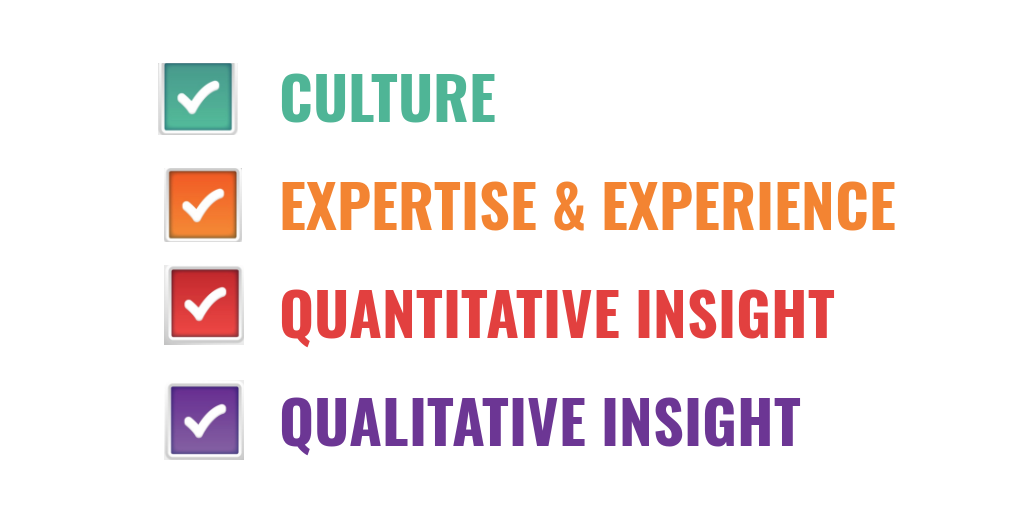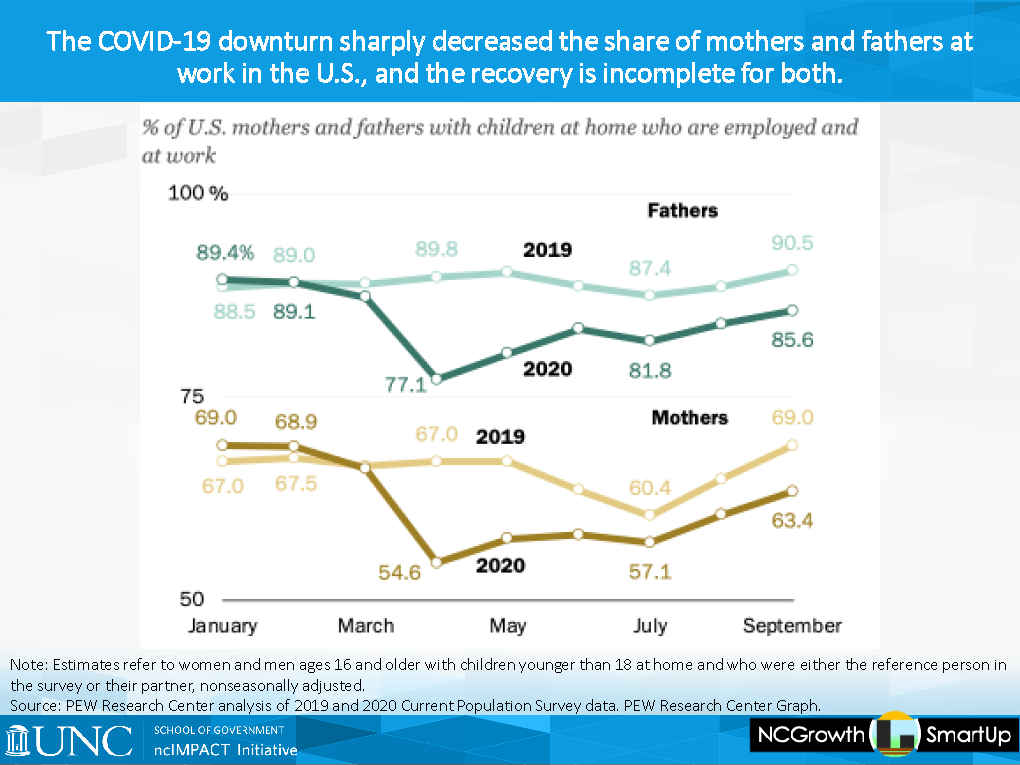Unwrapping the Information to Action Framework
The ncIMPACT Initiative has been collaborating with many of you leaders on the front lines, to learn how you have found effective paths forward during these once unimaginable circumstances. We have observed some relative consistency in the way decisions have been approached in communities across the state and the country. The Information to Action Framework distills our observations into a scaffolding that is usable and replicable, regardless of the size of your community or your available resources.

We at the ncIMPACT Initiative hope you are finding some time for yourself to rest and renew this holiday season. Early results of our COVID-19 Fall Survey of Local Governments make clear the importance of taking time for mental and physical well-being, given the remarkable stressors of 2020.
Stay tuned in 2021 for more insights from the survey!
On to this year’s gift! Below we describe our Information to Action Framework [1] which will help you prepare for the opportunities of a new year. Embedded in this gift is the bonus of early access to our COVID Tool metrics, data, visualizations, and documentation. We hope you will enjoy unwrapping all the features included.
So, let’s dive in!
Why the Information to Action Framework?
The ncIMPACT Initiative has been collaborating with many of you leaders on the front lines, to learn how you have found effective paths forward during these once unimaginable circumstances. We have observed some relative consistency in the way decisions have been approached in communities across the state and the country. The Information to Action Framework distills our observations into a scaffolding that is usable and replicable, regardless of the size of your community or your available resources.
Our Gift to You: The Information to Action Framework
There are four primary components for moving from information to action.
Component 1: Culture
The first key component of the Information to Action Framework is your own organizational and community culture. Important decisions, particularly in moments of crisis, need to reflect the established vision and values that operationalize culture for your organization and community. It is critical that you remain firm in the values you have established as decision-making guardrails, while remaining focused on the strategic vision for your organization and community. Strategy may rapidly change, but culture should remain a supportive constant.
If not already well-operationalized, culture may be neglected or forgotten when making decisions, or ignored in moments of crisis. Seeking community and organizational input on values and vision in the face of crisis will help ensure greater understanding of, and investment in, your responses.
The UNC School of Government is here to be a resource, so do reach out if we can be helpful in providing support with establishing your culture.
Component 2: Expertise and Experience
The second key component of the Information to Action Framework is accessing local, state, and national expertise and experience. Consulting with UNC School of Government faculty or staff could significantly expand the perspective of your knowledgeable and experienced staff and residents during an important decision-making process.
Even if you are one of the most well-informed and seasoned professionals out there, it’s impossible for you to know everything. Prioritize seeking out and valuing the input of others. Emphasize diversity of thought and perspective and your actions will be more effective. ncIMPACT’s Keys to Economic Growth and Recovery webinar and peer learning series have been designed to provide you with valuable time and space for this.
Component 3: Quantitative Insight
The third key component of the Information to Action Framework is quantitative insight. We have all heard how important it is to use timely and relevant data to inform our decision-making processes, but it can be difficult to make time for this in moments of crisis if we do not already have mechanisms in place. It’s also important to remember that data may not answer our questions, but can inform our thought process and help us ask deeper and better questions.
We at ncIMPACT hope that we are offering you valuable guidance and support with our COVID Composite Tool and our Data-Informed Decision Making webinar on January 27.
Component 4: Qualitative Insight
The fourth component of the Information to Action Framework is sufficient community and organizational qualitative insight to provide richer context and understanding for any quantitative information you may be leveraging. This may take the form of a community or organizational survey, targeted focus groups, and direct field engagement and observations to see the work done and learn how the data is collected.
It’s important to understand that this is sequenced last, because a lot of the most critical engagement around this component is informed both by your local subject matter expertise guidance and any quantitative insights about which you are generating questions. It should also carefully consider organizational and community vision and values to ensure that proper voice is given to provide the most value to your final decision.
You might find some additional gifts to help you with generating qualitative insights by exploring ncIMPACT’s Social Capital content, ncIMPACT’s Inclusive Economy content, or by checking out the Stanford d.school’s Public Library for some great human-centered design resources. Our colleague Maureen Berner also published this insightful article discussing human-centered design in community and economic development.
Wrapping-Up
As you head into next year, we hope our Information to Action Framework and the selection of indicators in the Composite Tool will offer helpful guidance to the recovery landscape for North Carolina communities. The indicators have been strategically selected to help communities all across North Carolina think about how to make tough decisions over the next 6-12 months to prioritize limited resources in the face of this crisis.
Watch for more information coming soon about how to easily access the source data for all the metrics in our COVID Composite Tool.
We’re dedicated to these kinds of partnerships with state and local leaders all across North Carolina, so you can make sound, data-informed decisions – even in a pandemic.
We hope you’ll rest up and renew over the holidays, and be ready for more transformational change in 2021. Warmest wishes for happy holidays and a safe and healthy New Year, from all of us at ncIMPACT Initiative!


